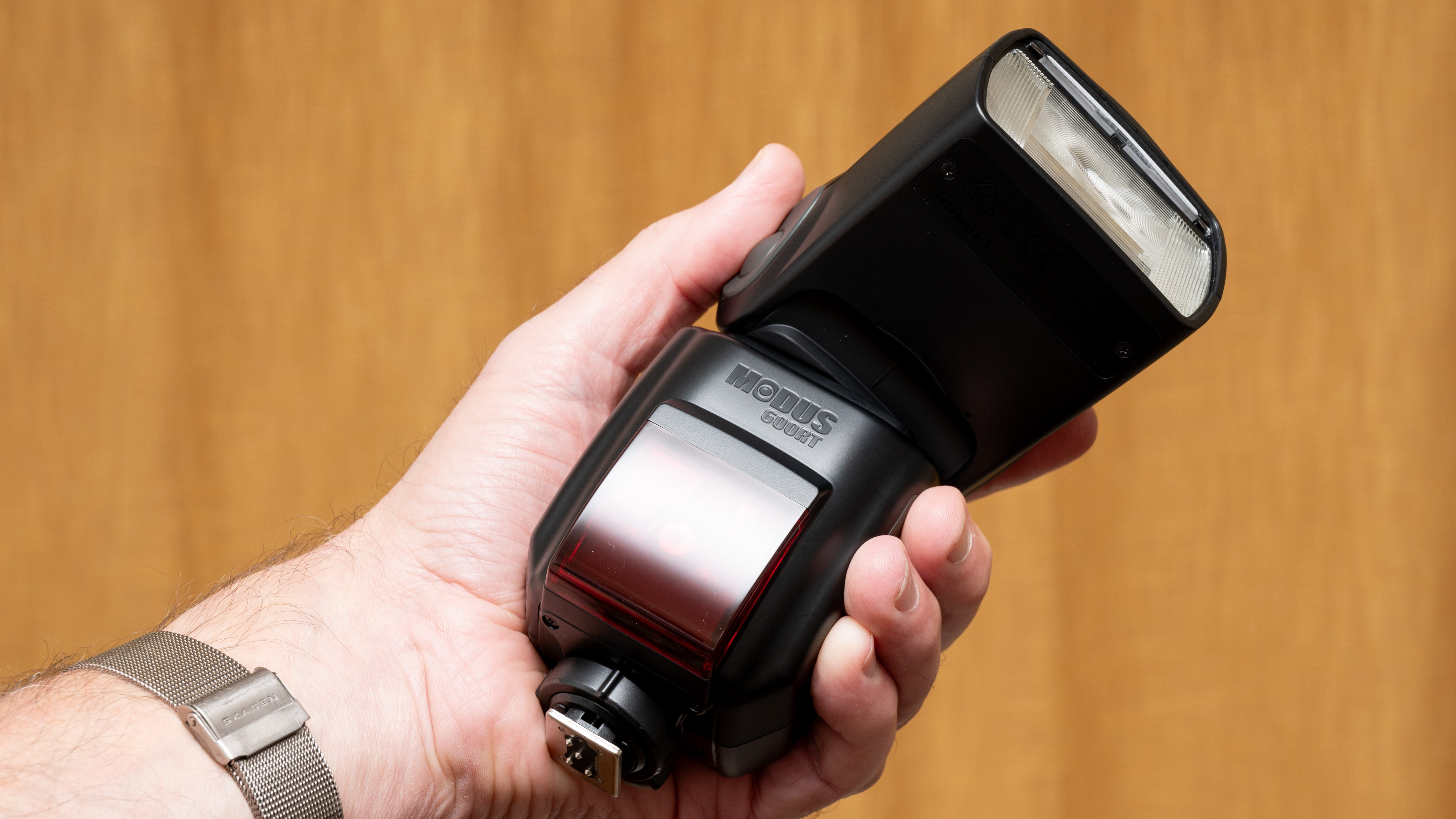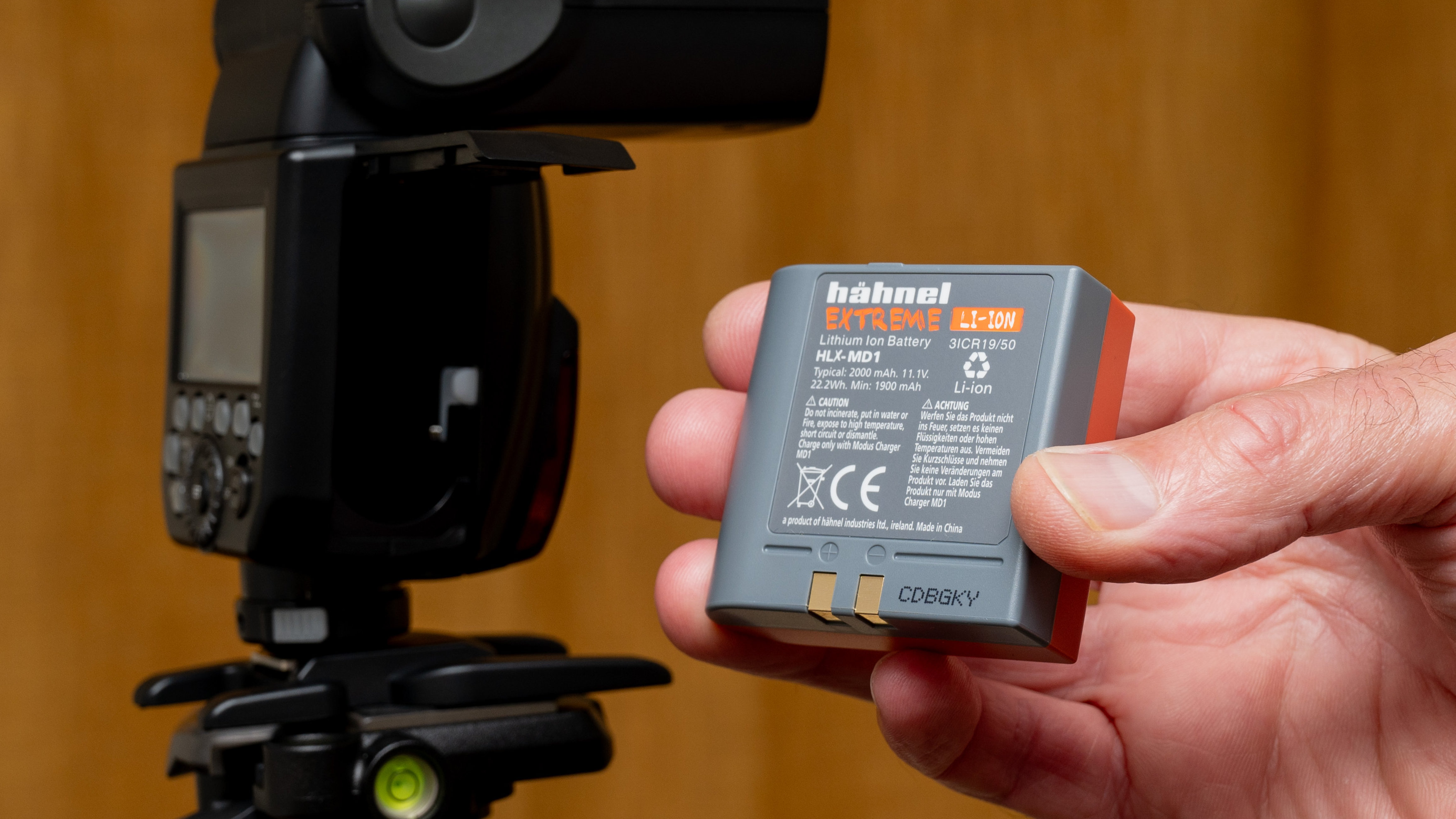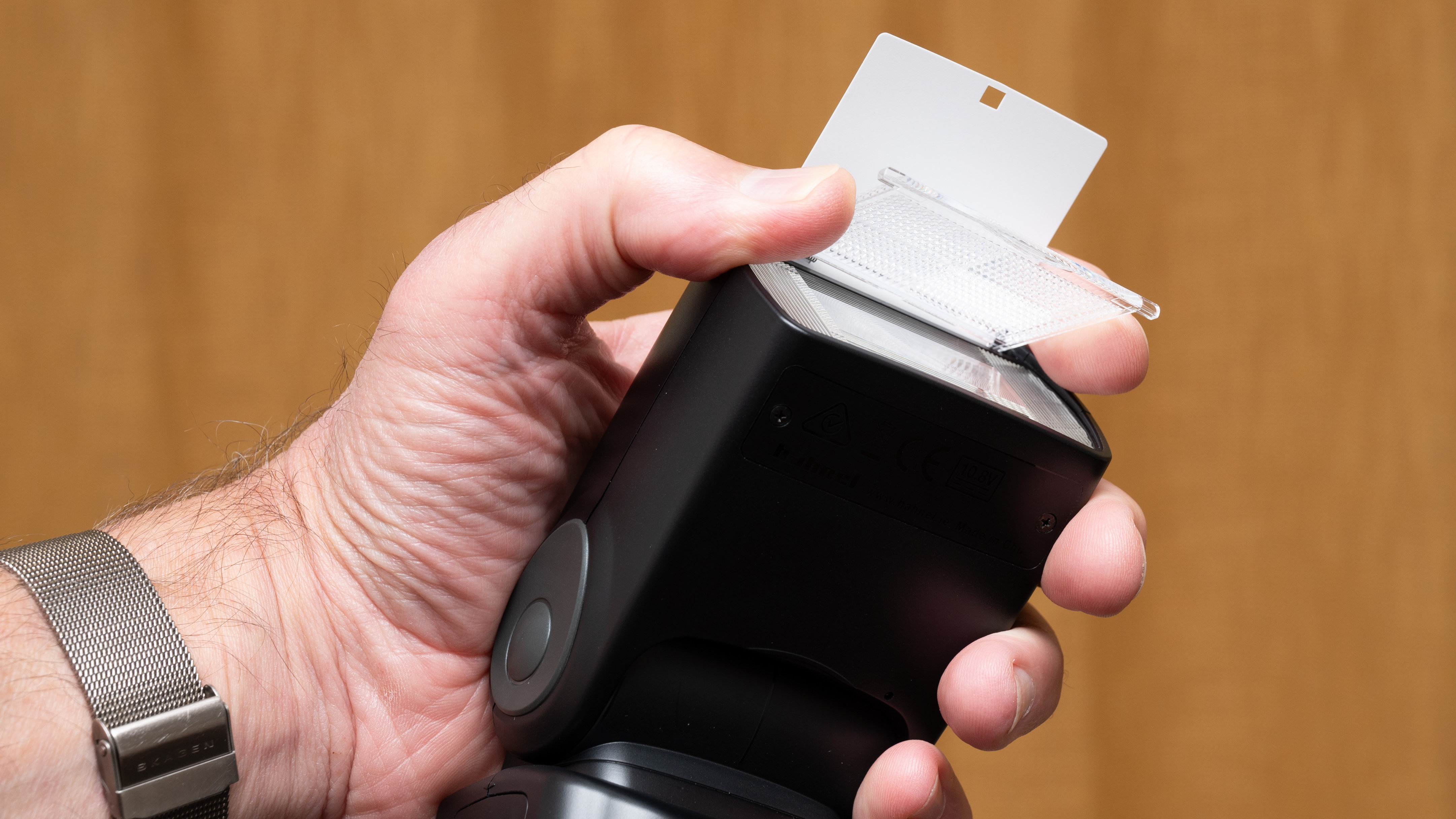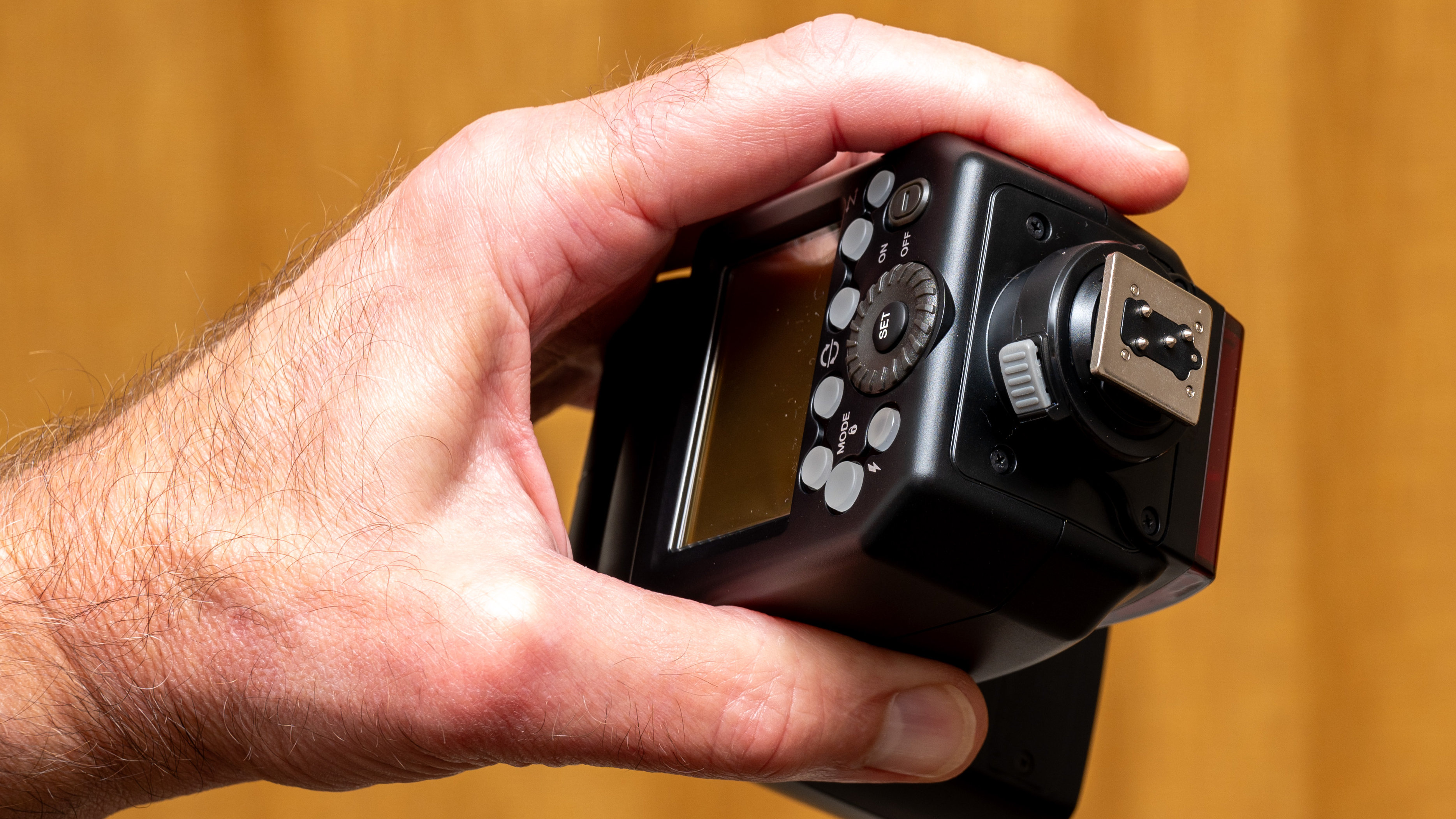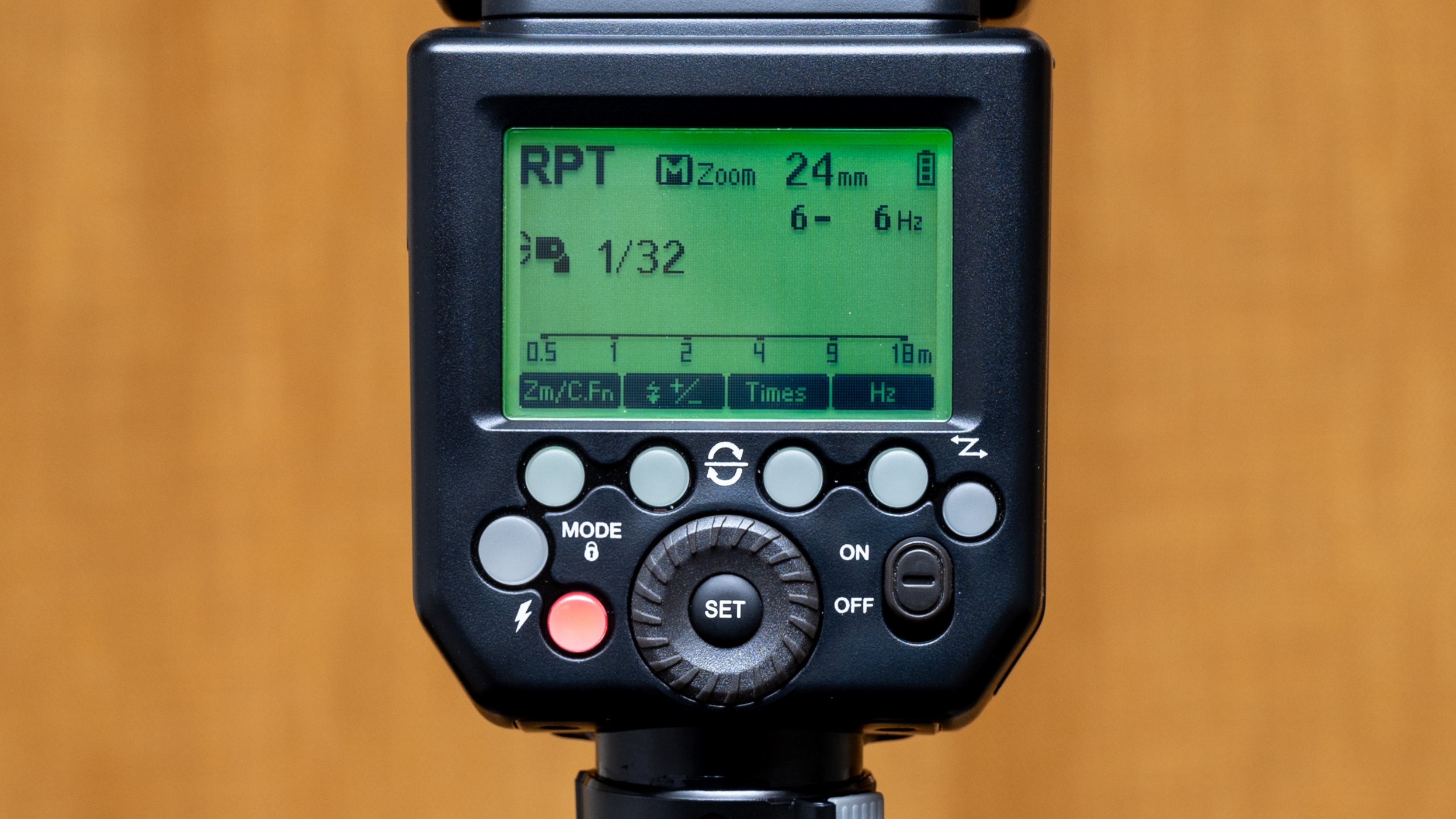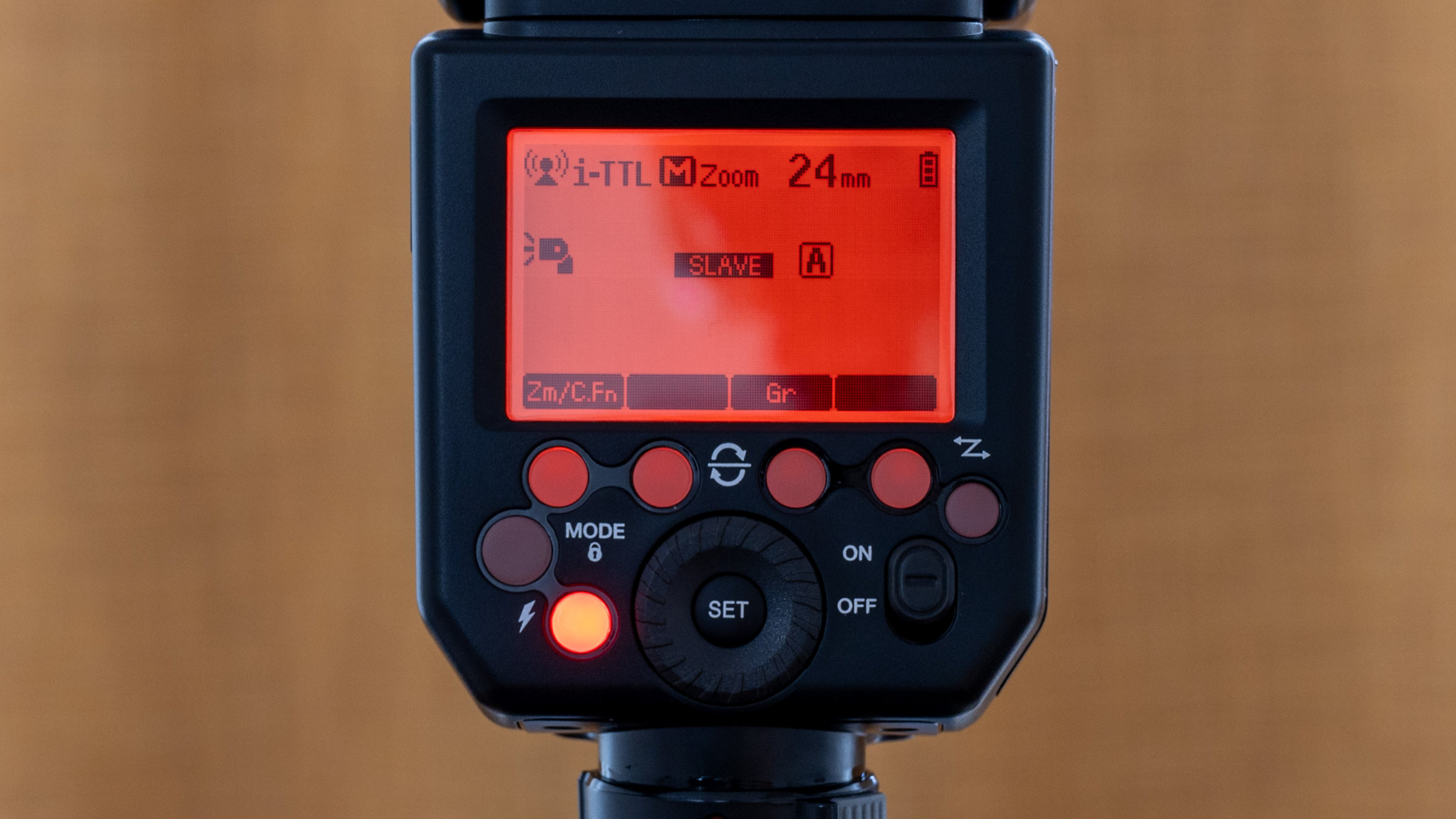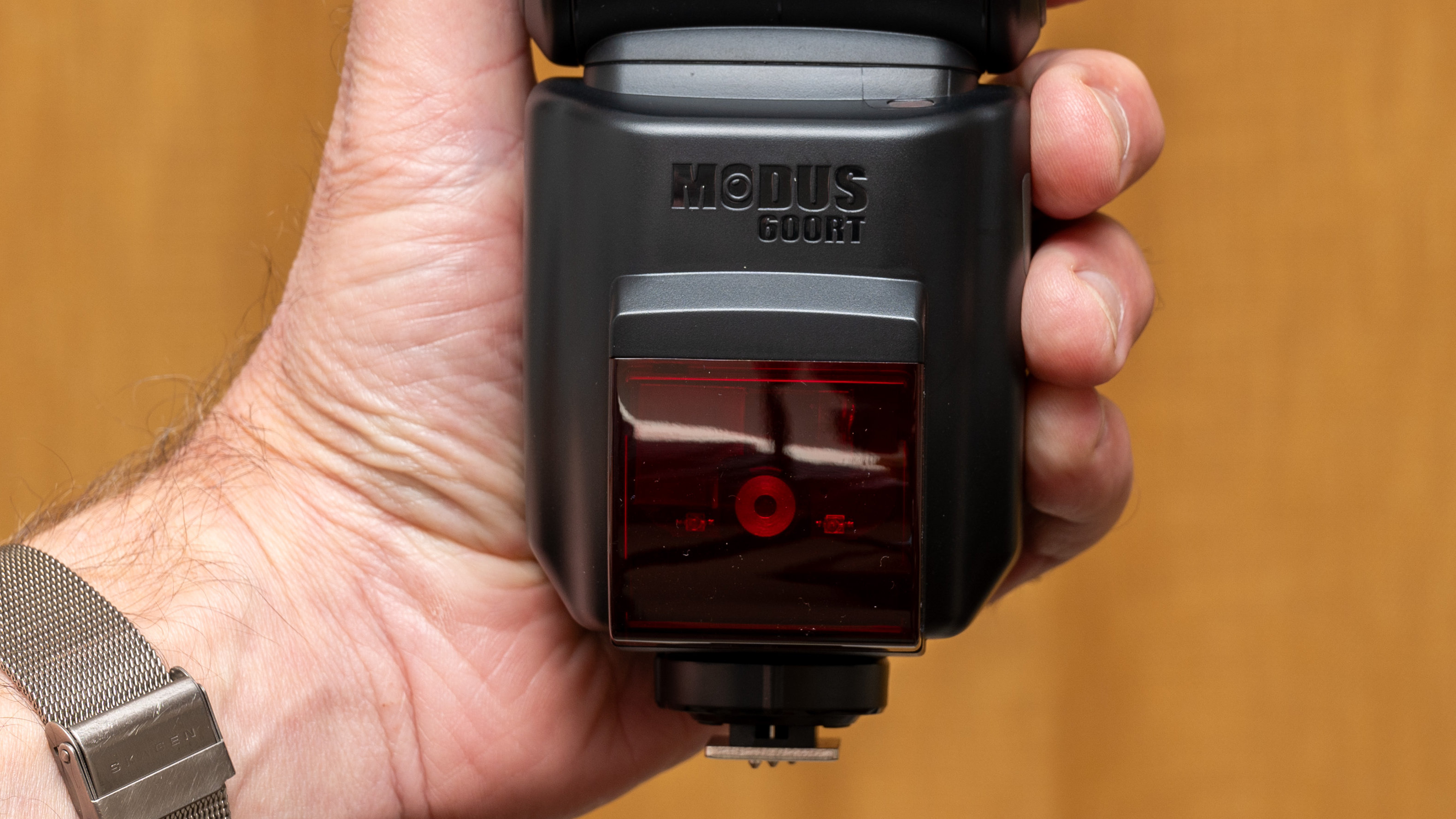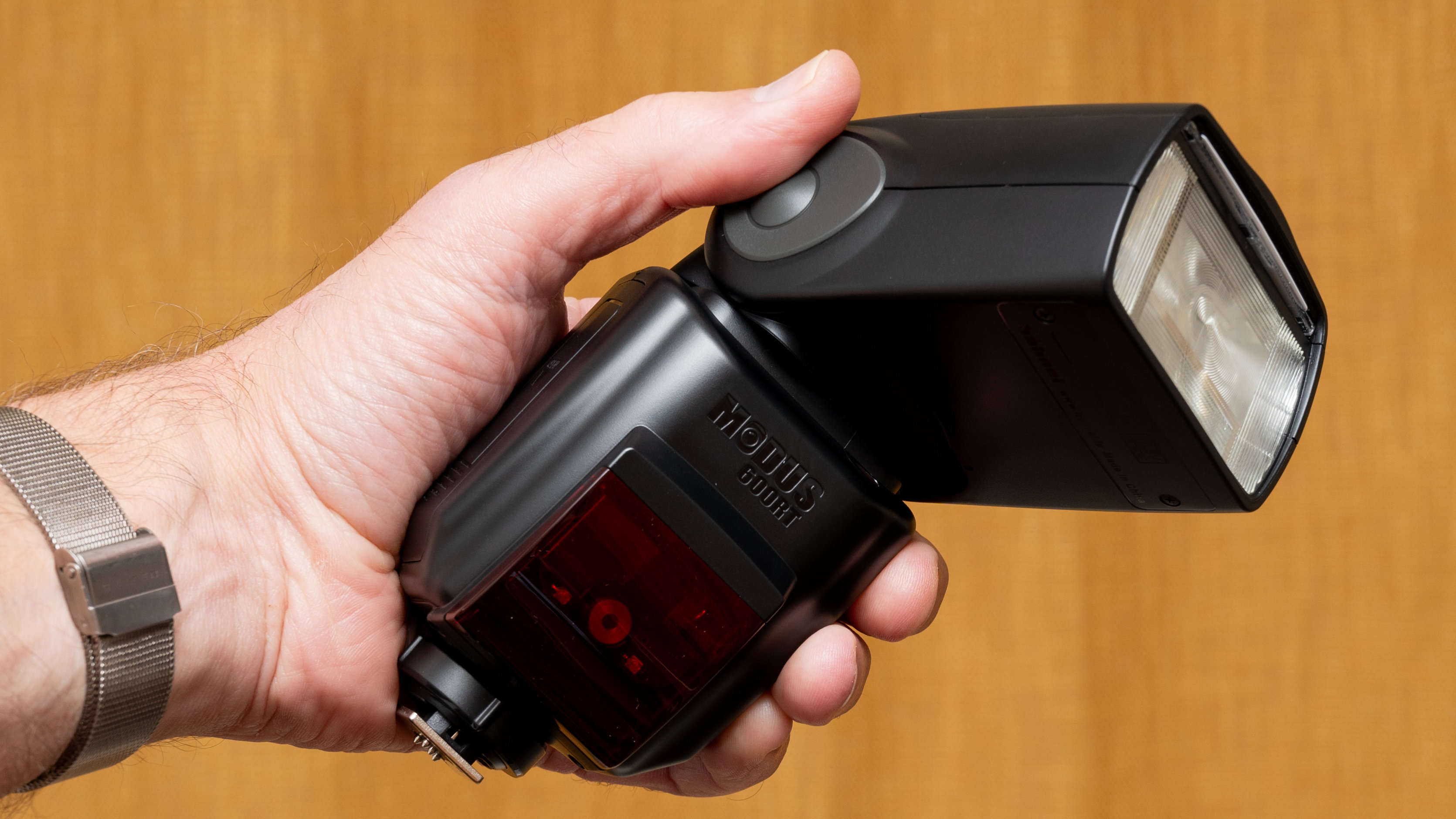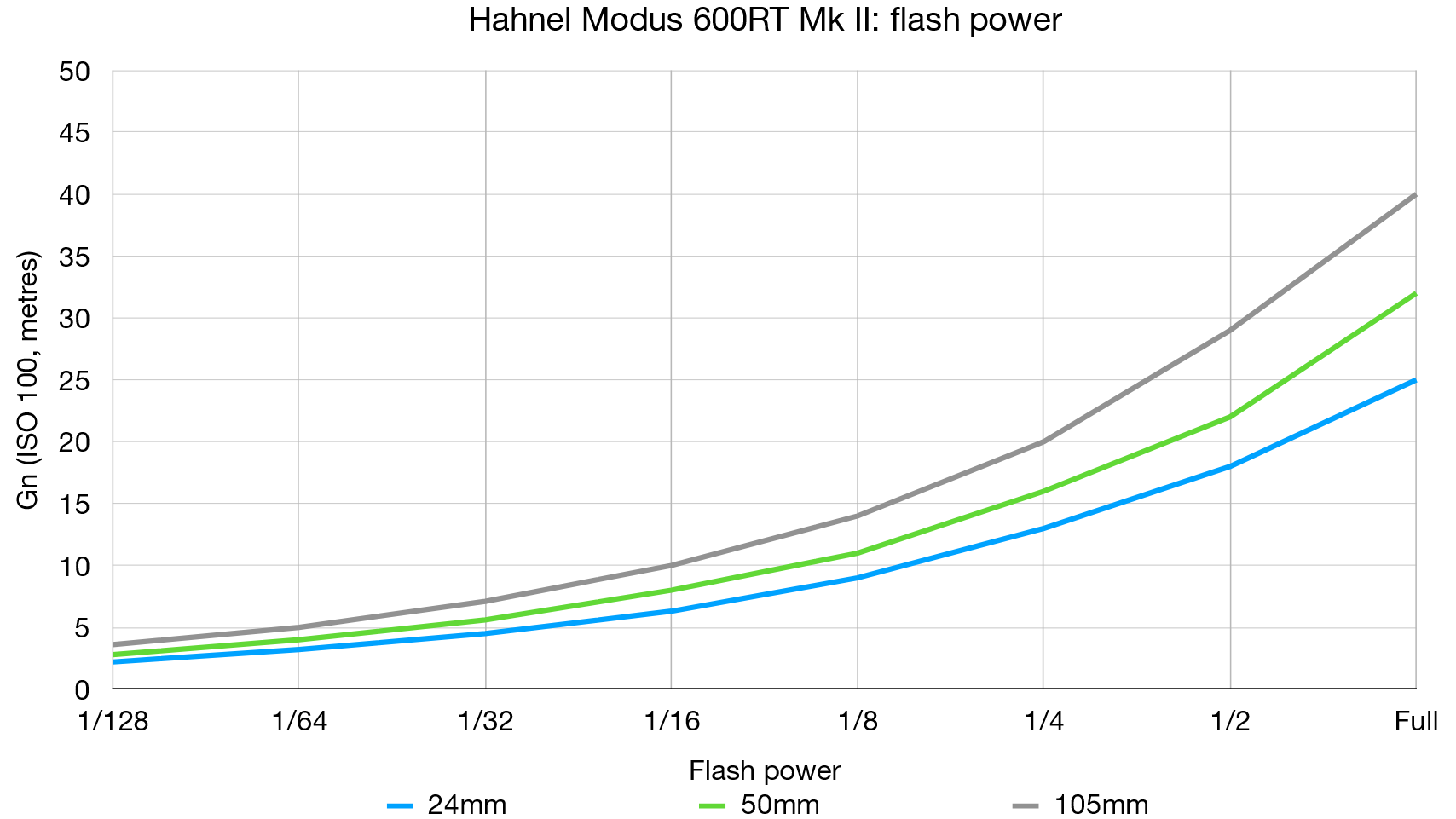Digital Camera World Verdict
Available in various dedicated options for Canon, Nikon, Sony, Fujifilm and Micro Four Thirds cameras, this flashgun is packed with high-end features. It has both RF and infrared master and slave connectivity, along with a powerful Gn 60 maximum power rating. Better still, it runs on a rechargeable Li-ion power pack instead of the usual four AA batteries, enabling super-fast recycle speeds and tremendous stamina. And it’s great value for money at the price.
Pros
- +
Super-fast recycling speeds
- +
Long battery life
- +
Advanced flash modes
Cons
- -
No secondary LED lamp
- -
Dated looking control panel
Why you can trust Digital Camera World
The Hahnel Modus 600RT Mk II comes in plenty of options. For starters, it’s available in fully dedicated versions to suit Canon, Nikon, Sony, Fujifilm and Micro Four Thirds cameras. The flashgun is great value, coming complete with Li-ion power pack and USB charger, tabletop/tripod cold shoe and soft carrying case. For a little more, the ‘Wireless Kit’ includes a hot shoe-mounting Hahnel Viper RF trigger with a 100m range and if you fancy doubling up, the ‘Pro Kit’ includes two flashguns plus the same hotshoe Viper trigger.
Specifications
Dedication: Canon, Nikon, Sony, Fujifilm, MFT
Gn, ISO 100, max zoom (m / ft): Gn 60 / 197
Bounce range: -7 to 90 degrees
Swivel, left / right: 180 / 180 degrees
Zoom Range: 20-200mm
Manual Power Settings: 1/1 to 1/128
AF-assist beam: Red lamp
Wireless: RF + optical master / slave
Additional Flash Modes: HSS, RC, SS, Strobe
Dimensions (W x H x D): 64 x 76 x 190 mm
Weight (excl batteries): 430g
Key features
Unlike the vast majority of flashguns, this one is powered by a rechargeable Li-ion battery pack. As a result, it has far greater stamina, delivering up to 600 full-power flashes and as many as 1,000 at its half-power setting. Recycling speeds are about twice as fast as from most flashguns that use AA batteries, at 1.5 seconds after a full-power flash and just 0.7 seconds after a half-power flash.
The impressive feature set doesn’t end there. The Hahnel has a motorized zoom head with a mighty 20-200mm range, a flip-down 14mm wide-angle diffuser and a pull-out reflector card.
Advanced flash modes include high-speed sync, rear curtain and programmable stroboscopic output, the last of which is often only available in flashguns that cost much more to buy. Improvements in the Mark II include a quick-release hotshoe locking lever and a new battery charger with a USB socket for added versatility.
The control panel interface is entirely conventional, based on a set of pushbuttons and a rotary dial. As a visual aid, there’s an illuminated mono display which lights up green in regular flash modes and turns orange when you switch to wireless RF operation.
The flashgun features a red AF-assist lamp built into the lower section at the front, It’s useful under very low lighting if you’re using a DSLR, but not if you’re using a mirrorless camera that can’t make use of the red lamp.
The best camera deals, reviews, product advice, and unmissable photography news, direct to your inbox!
Like most flashguns these days, the Hahnel comes complete with a tabletop stand, which also has a threaded socket for mounting it on a tripod or other support. It’s of good quality in this case, with a threaded brass insert instead of being entirely plastic.
For the sake of comparison, the following image shows how the 600RT Mk II sizes up against its younger and smaller sibling, the Hahnel Modus 360RT, which packs most of the same high-end features into a more compact, lightweight build, albeit with a lower maximum output power.
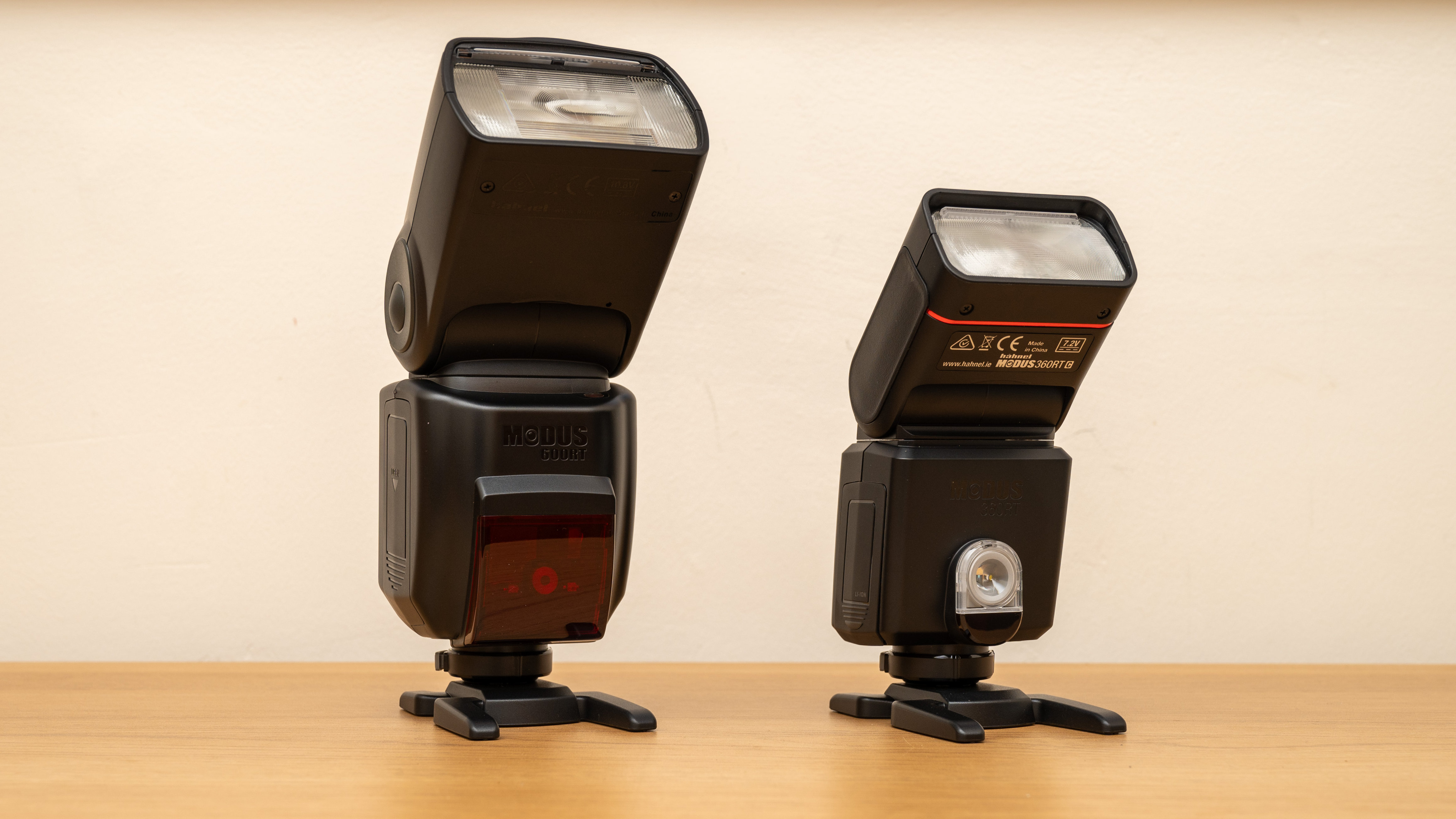
Performance
Performance is impressive in all areas, from powerful maximum output to super-fast recycling and reliable TTL metering. In our tests with the optional Viper RF trigger, it never missed a beat and you can link other makes of flashgun to an RF group by using Hahnel’s companion Viper receivers. However, the flashgun faces stiff competition from the Godox VING V860III, which is also Li-ion powered, offers the same range of features and also adds a secondary LED lamp.
Lab results
We test all available features for each flashgun that goes through out labs. To test power output, we used a Sekonic flash meter placed at a distance of one meter from each flashgun. We check the complete range of manual power settings, in one-stop increments. Based on a sensitivity of ISO 100, the figures correlate directly with the Gn (Guide number). The results are double-checked by taking shots of a gray card with the appropriate lens apertures and using the camera’s histogram display in playback mode. This is done for flash zoom settings of 24mm, 50mm and 105mm (in full-frame terms), where available.
We also check the accuracy and consistency of electronic/intelligent TTL (Through The Lens) flash metering, and the speed with which each flashgun can recycle to a state of readiness after a full-power flash, using both Ni-MH and alkaline cells, or a Li-ion power pack where supplied.
Power output:
There’s plenty of power on tap. In our tests, the Hahnel drew level with top-end own-brand flashguns from camera manufacturers, including the Canon Speedlite 600EX II-RT and Nikon Speedlight SB-5000.
TTL accuracy (+/-EV): 0
Independently manufactured flashguns sometimes lack the accuracy and consistency of own-brand models but in our tests with the Canon and Nikon dedicated options, the Hahnel proved excellent.
Recycling speed: 1.5 seconds
Thanks to the rechargeable Li-ion power pack, recycling speeds are very fast. They’re virtually instantaneous and low to medium output settings and just 1.5 seconds after a full-power flash.
Verdict
Available in various dedicated options for Canon, Nikon, Sony, Fujifilm and Micro Four Thirds cameras, this flashgun is packed with high-end features. It has both RF and infrared master and slave connectivity, along with a powerful Gn 60 maximum power rating. Better still, it runs on a rechargeable Li-ion power pack instead of the usual four AA batteries, enabling super-fast recycle speeds and tremendous stamina. And it’s great value for money at the price.
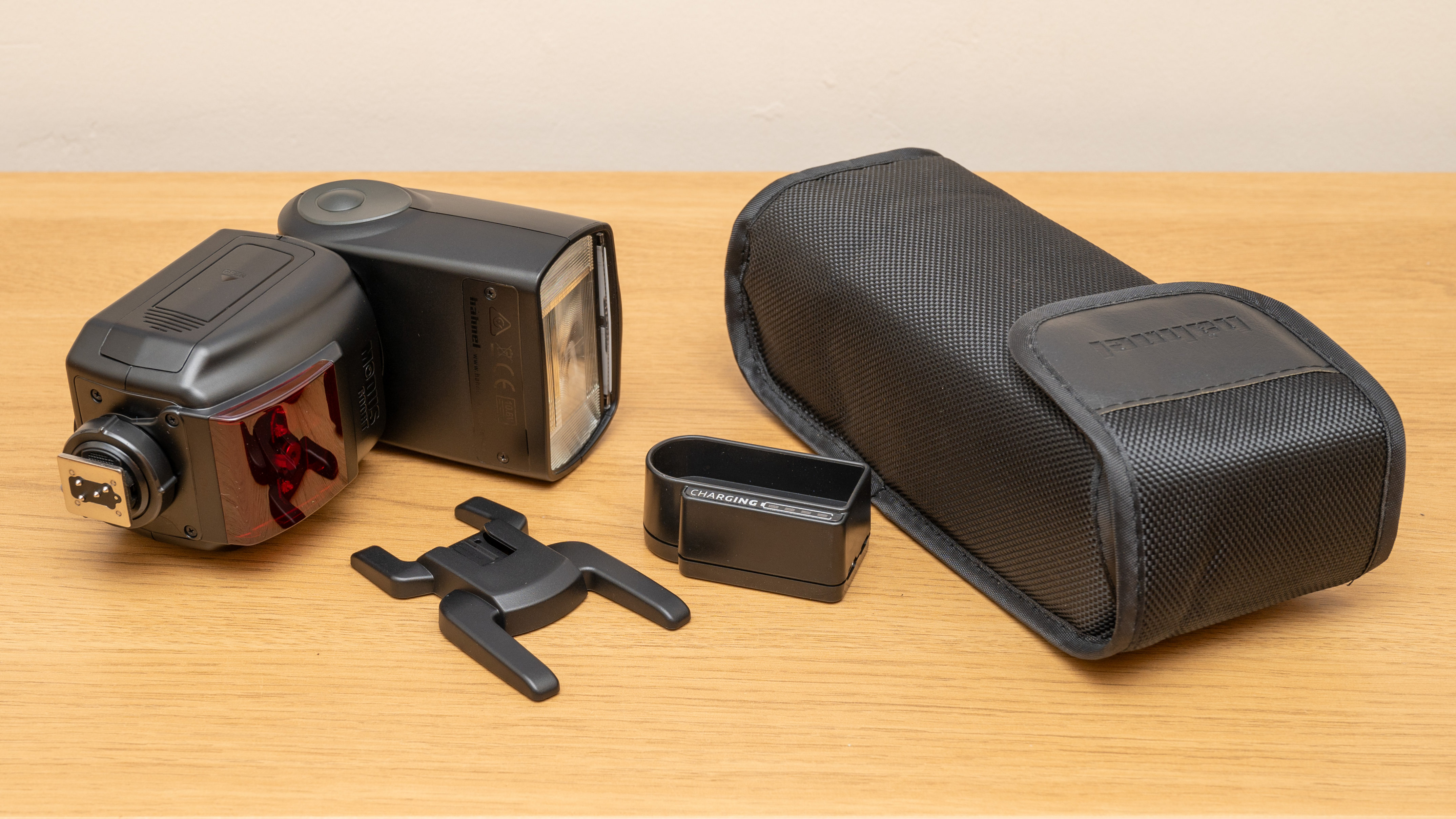
Read more:
• Best camera lenses to get
• Best Canon lenses
• Best Nikon lenses
• Best Sony lenses
Matthew Richards is a photographer and journalist who has spent years using and reviewing all manner of photo gear. He is Digital Camera World's principal lens reviewer – and has tested more primes and zooms than most people have had hot dinners!
His expertise with equipment doesn’t end there, though. He is also an encyclopedia when it comes to all manner of cameras, camera holsters and bags, flashguns, tripods and heads, printers, papers and inks, and just about anything imaging-related.
In an earlier life he was a broadcast engineer at the BBC, as well as a former editor of PC Guide.


